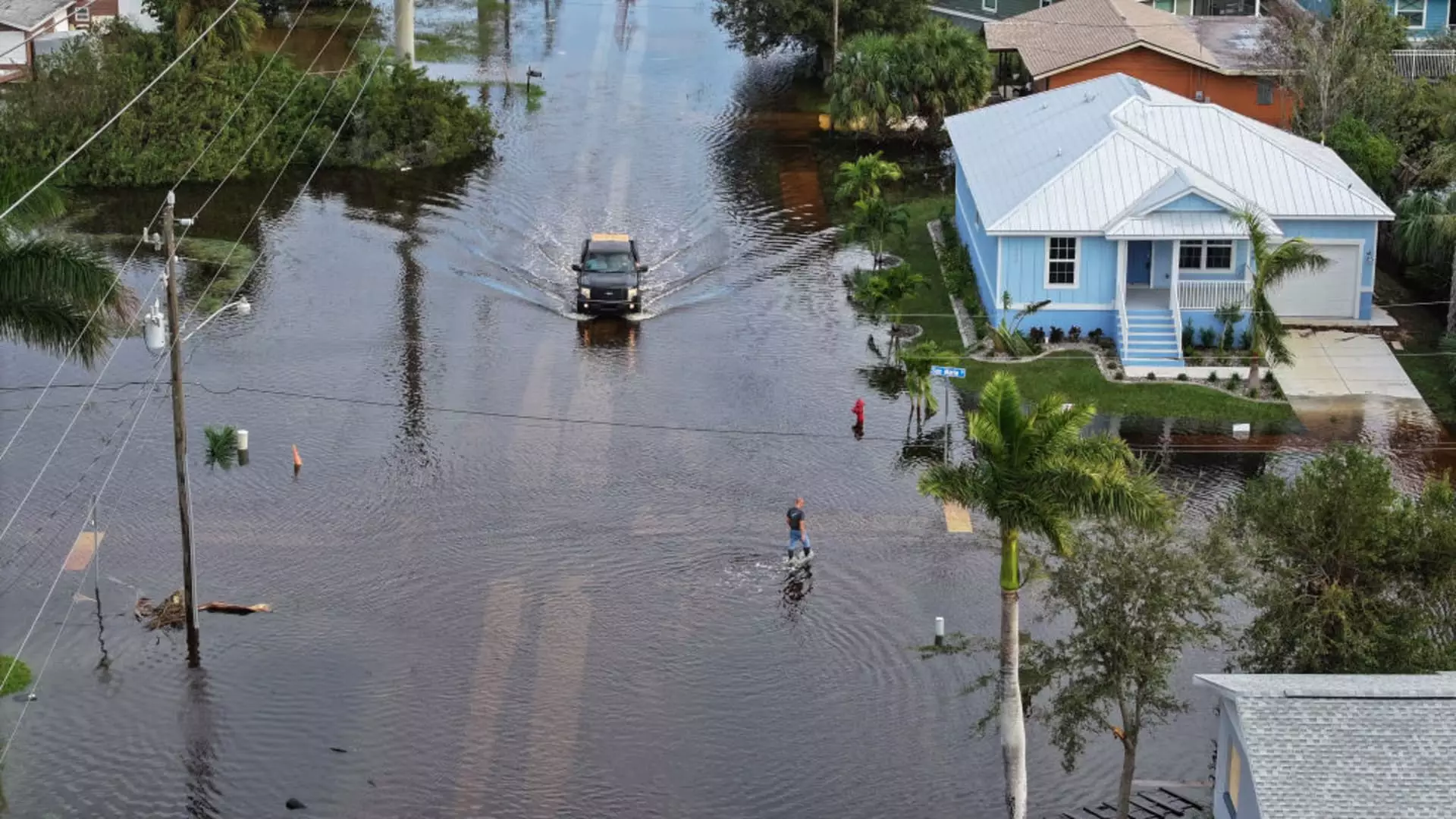As we launch into the tumultuous months of hurricane season, the forecast looms heavy with the possibility of increased storm activity—a glaring reminder of our vulnerability against nature’s fury. The National Oceanic and Atmospheric Administration (NOAA) projects a staggering 60% chance of above-normal hurricane activity in the Atlantic this year, a statistic that should send shivers down the spine of homeowners across the impacted regions. With projections indicating 13 to 19 named storms and the possibility of up to five devastating hurricanes, it becomes imperative to reconsider the contours of our home insurance policies.
It is not merely an exercise in caution; it is a crucial lifeline that often dictates whether individuals sink into financial turmoil or stay afloat amidst the wreckage. The heart of the matter lies in the chilling reality that hurricanes can cause damage amounting to billions of dollars. Last year alone, the economic fallout from such disasters was estimated at a jaw-dropping $500 billion—a stark indicator that ignorance in insurance matters is not a luxury we can afford.
Proactivity versus Reactivity: A Matter of Survival
Waiting until disaster strikes to address insurance concerns is akin to trying to repair a dam while water is surging through the cracks. This isn’t about preparing for inconveniences; it’s about safeguarding livelihoods. Ken Graham, NOAA’s National Weather Service director, called for individuals to take proactive measures—preparing emergency supplies is critical, but understanding your insurance policy could be the difference between recovery or prolonged hardship.
Charles Nyce, a risk management expert from Florida State University, aptly emphasizes the importance of reviewing insurance policies as an essential prerogative, particularly with looming storms threatening. Homeowners must prioritize understanding four crucial aspects: the financial value of their property, the potential costs of losses, their coverage regarding flood damage, and the readiness with which they could face emergencies. This is not merely disclaimer language; it reflects the high-stakes nature of our safety and financial stability in times of crisis.
Underinsurance: A Silent Threat
Critical to navigating the approaching stormy seas is a thorough assessment of an insurance policy’s limits. This vital figure represents the maximum amount your insurer is willing to pay for covered damages. Unfortunately, many homeowners operate under the naive assumption that this figure remains adequate over time. Rising construction costs and potential renovations can leave them perilously underinsured.
Recent data indicates that building material costs have risen sharply—up 42.7%—compounding a previous increase in labor costs by 36.3% in the last five years. These figures convey a singular truth: your policy must evolve with the reality of the market or risk financial disaster at the moment when your home’s restoration is most crucial. The industry-standard 80% rule warrants a review of whether you can confidently meet this threshold without jeopardizing your claim should the worst occur.
The Balancing Act of Deductibles
An essential yet commonly misunderstood aspect of homeowners insurance is the deductible—what homeowners must pay out of pocket before receiving an insurance payout for damages. Lowering the deductible can ease monthly premiums, but raising it can amplify financial stress should a disaster occur. Homeowners must balance the appeal of lower premiums against the stark reality of potential out-of-pocket costs after a hurricane.
Wind deductibles, which differ from standard deductibles, are particularly treacherous; these can represent large percentages of the home’s value. Imagine facing a staggering $10,000 out-of-pocket cost for storm damages because your deductible is set at 2% of a $500,000 policy. Such an expense could cripple many families just as they are trying to navigate the recovery process.
Flood Insurance: The Unsung Hero
Amidst this insurance assessment, it is crucial not to overlook the perennial elephant in the room: flood insurance. Standard homeowner policies often do not cover flood-related damages—an unbelievable oversight considering that floods account for approximately 90% of disaster-related destruction in the United States. What’s more shocking is that many homeowners still fail to secure this fundamental protection.
The need for flood insurance becomes particularly pressing as we look back at storms like Hurricane Helene, which showcased the devastating extent of flooding. Even in non-flood-prone regions, homeowners can be caught off guard, resulting in tragically low coverage rates. It is vital to grasp that there is often a 30-day waiting period before flood policies take effect, making it imperative to secure such coverage proactively well before storms form on the horizon.
Navigating the complexities of homeowners insurance may feel daunting, but the ramifications of neglecting this crucial aspect of storm preparedness are far harsher. As we brace ourselves for a potentially active hurricane season, it’s time to shift our focus from mere readiness to strategic foresight. The decisions made now regarding insurance could save families from disaster when the next storm inevitably strikes. 🌀

